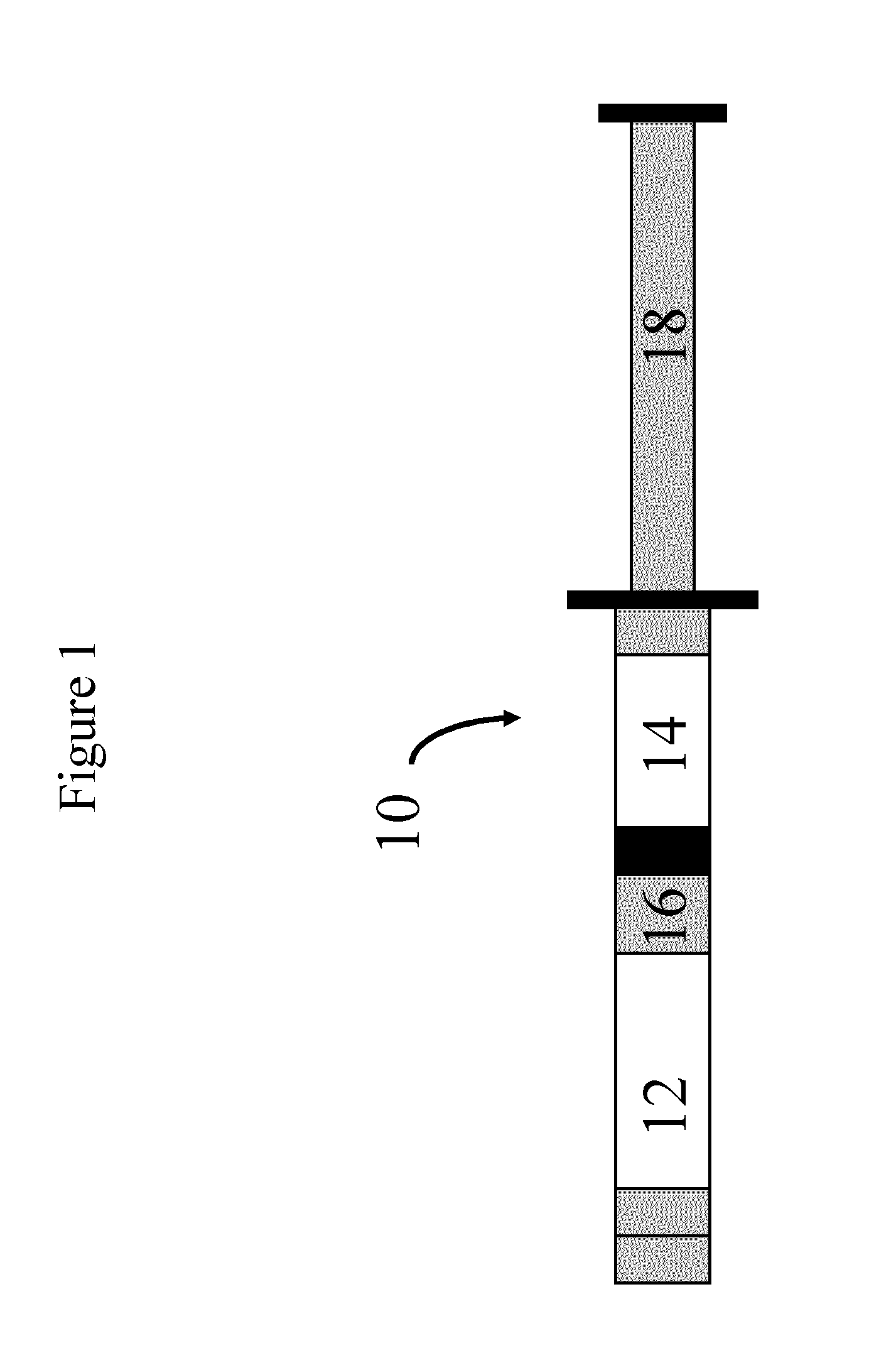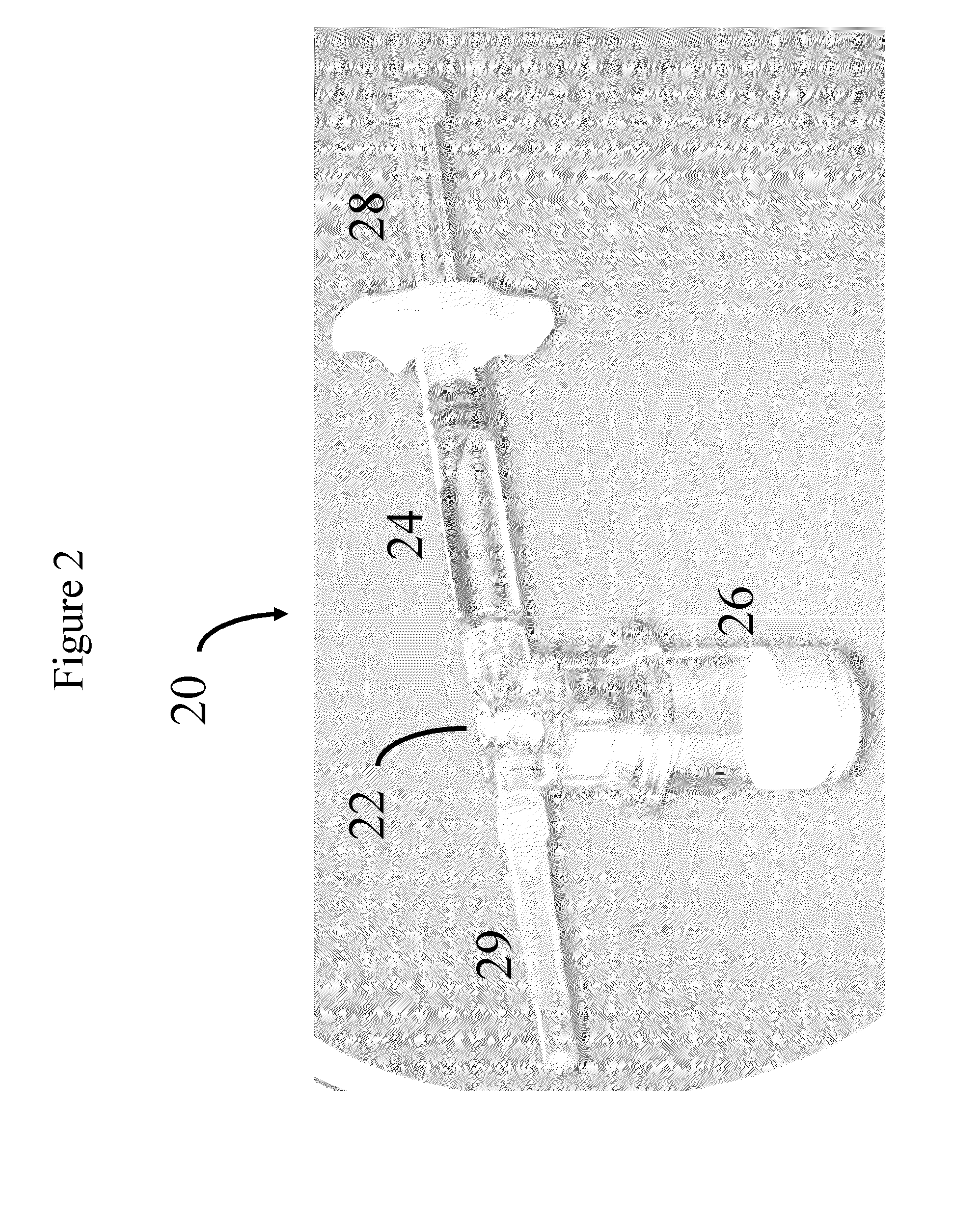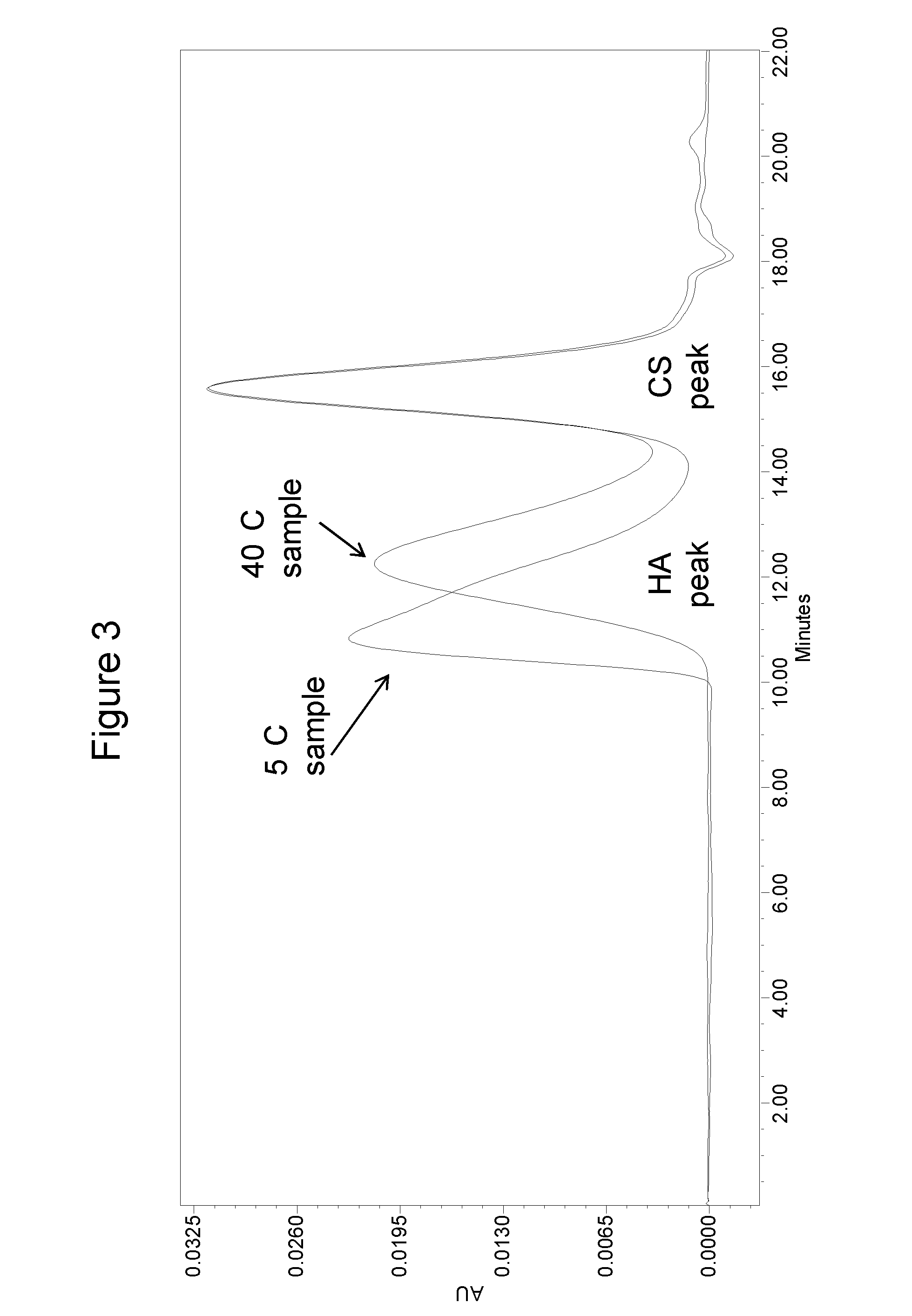Compositions and methods for stabilized polysaccharide formulations
a technology of stabilized polysaccharide and formulation, which is applied in the field of compositions and methods for treating joints, can solve the problems of pain, swelling and stiffness of patients, and the associated side effects of nsaids in severe cases, and achieves no safer side effects of nsaids
- Summary
- Abstract
- Description
- Claims
- Application Information
AI Technical Summary
Benefits of technology
Problems solved by technology
Method used
Image
Examples
example 1
Stability of Liquid HA and CS Formulations with Various Stabilizers
[0109]HA at 2.5 mg / mL and Chondroitin sulfate (CS) at 2.5 mg / mL were formulated with different stabilizers as outlined in Table 1. The formulations were tested for HA stability at 5° C. and 40° C. / 75% RH storage conditions (FIG. 3). After five months, the test samples were analyzed by a size exclusion chromatography (SEC)-high performance liquid chromatography method. Briefly, the test sample was diluted with a mobile phase (100 mM sodium phosphate buffer, pH 7) to 0.1 mg / mL HA. The diluted sample was then injected onto a HPLC column (phenomenex, Poly Sep-GFC-P linear column, catalog number 00H-3147-KO) with a flow rate of 0.6 mL / min. The eluted HA peaks were monitored with 207 nm wavelength and the retention time was compared with HA molecular weight standards to determine the molecular weight of the test sample.
[0110]As shown in Table 1, the saline formulation was the least stable formulation at 40° C. as compared ...
example 2
Stability of HA Formulation with Various Concentrations of Trehalose
[0113]HA at different concentrations was formulated with various concentrations of trehalose as outlined in Table 4. Some of the formulated solutions were divided into two groups. One was placed at stability chambers for liquid stability study and the other was lyophilized for solid stability assessment. After three months of storage at 5° C. and 40° C. / 75% RH, the test samples were analyzed using the SEC-HPLC method. As shown in Table 4, no significant differences in molecular weight were observed among the samples with different concentrations of trehalose. However, without any excipients HA formulated with water only was much less stable in liquid form and lyophilized form.
TABLE 4Stability of HA formulation with variousconcentrations of trehaloseMolecularFormulation compositionFormulation IDWeight kDa10 mg / mL HA with 5%Liquid 177A, 5° C.2103(w / v)trehalose in waterLiquid 177A, 40° C.19022 mg / mL HA with 2%Liquid 14...
example 3
Rat MMT Model of Osteoarthritis
[0114]In the rat medial mensical tear (MMT) model of osteoarthritis, transection of the medial meniscus results in joint deterioration and reduced weight bearing that mimics human osteoarthritis. A unilateral medial meniscal tear in 300-400 gram rats results in rapidly progressive cartilage degenerative changes characterized by chondrocyte and proteoglycan loss, fibrillation, osteophyte formation and chondrocyte cloning. Such changes are typically observed to be substantial by day 21 following the meniscal surgery. The extent of joint deterioration, as determined primarily by the extent of cartilage lesions formed, can be measured using a semi-quantitative histological scoring system.
[0115]To test the utility of trehalose as a vehicle for intra-articularly injected compounds, a solution of trehalose was formulated as a 5% solution in 3 mM glycine-HCl buffer, having a pH of approximately 3. The solution was tested in the rat MMT model. Transection of th...
PUM
| Property | Measurement | Unit |
|---|---|---|
| molecular weight | aaaaa | aaaaa |
| concentration | aaaaa | aaaaa |
| molecular weight | aaaaa | aaaaa |
Abstract
Description
Claims
Application Information
 Login to View More
Login to View More - R&D
- Intellectual Property
- Life Sciences
- Materials
- Tech Scout
- Unparalleled Data Quality
- Higher Quality Content
- 60% Fewer Hallucinations
Browse by: Latest US Patents, China's latest patents, Technical Efficacy Thesaurus, Application Domain, Technology Topic, Popular Technical Reports.
© 2025 PatSnap. All rights reserved.Legal|Privacy policy|Modern Slavery Act Transparency Statement|Sitemap|About US| Contact US: help@patsnap.com



